What is the normal range for ast. Understanding AST Blood Test: Normal Range, Significance, and Implications
What is the normal range for AST in a blood test. How does AST help diagnose liver function. What causes elevated AST levels. When should you be concerned about AST results.
What is Aspartate Aminotransferase (AST) and Why is it Important?
Aspartate aminotransferase (AST) is an enzyme primarily found in the liver, but also present in other organs such as the heart, muscles, and kidneys. This enzyme plays a crucial role in amino acid metabolism and is often used as a biomarker for liver health. When liver cells are damaged, AST is released into the bloodstream, causing elevated levels that can be detected through a blood test.
AST is also known by its alternative name, serum glutamic-oxaloacetic transaminase (SGOT). The AST blood test is typically performed alongside other liver function tests to provide a comprehensive assessment of liver health and function.
The Role of AST in Liver Function
AST is an essential enzyme in the liver that catalyzes the transfer of amino groups between aspartate and glutamate. This process is vital for the metabolism of amino acids and the production of proteins. When liver cells are damaged or destroyed, AST is released into the bloodstream, leading to elevated levels that can be detected through a blood test.
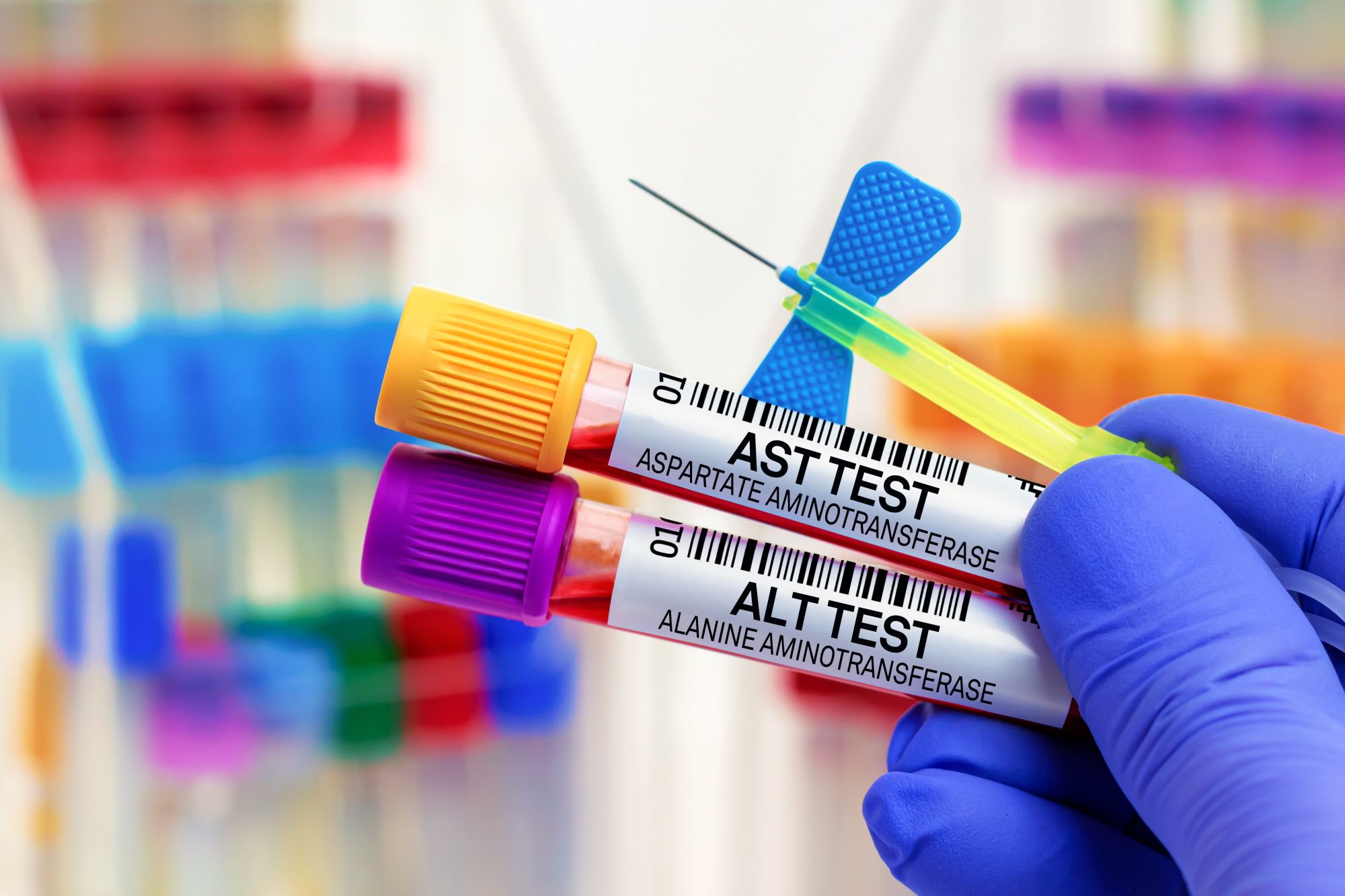
What is the Normal Range for AST in a Blood Test?
The normal range for AST in a blood test typically falls between 8 to 33 U/L (units per liter). However, it’s important to note that normal value ranges may vary slightly among different laboratories due to variations in testing methods or sample types. Always consult with your healthcare provider to interpret your specific test results accurately.
Factors Affecting AST Levels
Several factors can influence AST levels in the blood, including:
- Age and gender
- Body mass index (BMI)
- Medication use
- Alcohol consumption
- Exercise intensity and frequency
- Pregnancy
Understanding these factors can help healthcare providers interpret AST results more accurately and determine if further testing or investigation is necessary.
How is the AST Blood Test Performed?
The AST blood test is a simple and routine procedure that requires a small blood sample. Here’s what you can expect during the test:
- A healthcare professional will clean the area, usually the inside of your elbow or back of your hand, with an antiseptic.
- An elastic band will be wrapped around your upper arm to make the vein more visible and easier to access.
- A needle will be inserted into the vein to draw a small amount of blood.
- The blood sample is collected in a vial or tube.
- The needle is removed, and the puncture site is covered with a bandage.
The entire process usually takes less than five minutes. While some people may experience slight discomfort or a brief stinging sensation during the blood draw, serious complications are rare.

Preparing for the AST Blood Test
In most cases, no special preparation is required for an AST blood test. However, your healthcare provider may provide specific instructions based on your individual circumstances. It’s essential to inform your doctor about any medications, supplements, or herbal remedies you’re taking, as some substances can affect AST levels.
What Do Elevated AST Levels Indicate?
Elevated AST levels can be indicative of various health conditions, primarily related to liver damage or disease. Some common causes of increased AST levels include:
- Liver cirrhosis
- Hepatitis (viral or alcoholic)
- Liver cancer
- Heart attack
- Hemochromatosis (iron overload)
- Muscle damage or trauma
- Pancreatitis
- Certain medications
It’s important to note that AST levels alone are not diagnostic of any specific condition. Healthcare providers typically consider AST results in conjunction with other liver function tests and clinical symptoms to make an accurate diagnosis.
The Relationship Between AST and ALT
Alanine aminotransferase (ALT) is another enzyme commonly measured alongside AST in liver function tests. The ratio of AST to ALT can provide valuable insights into the nature and severity of liver damage. For example, an AST/ALT ratio greater than 2:1 is often associated with alcoholic liver disease, while a ratio less than 1 may indicate viral hepatitis or other forms of liver injury.

When Should You Be Concerned About AST Results?
While slight elevations in AST levels may not always be cause for immediate concern, there are certain situations where further investigation is warranted:
- AST levels more than 2-3 times the upper limit of normal
- Persistent elevation of AST levels over time
- AST elevation accompanied by symptoms of liver disease (e.g., jaundice, abdominal pain, fatigue)
- Significant changes in AST levels compared to previous test results
If you have concerns about your AST results, it’s crucial to discuss them with your healthcare provider. They can provide context for your results and determine if additional testing or treatment is necessary.
Follow-up Tests and Procedures
Depending on the AST results and other clinical factors, your healthcare provider may recommend additional tests or procedures to further evaluate liver health, such as:
- Comprehensive metabolic panel
- Hepatitis panel
- Liver ultrasound or imaging studies
- Liver biopsy
These follow-up tests can help identify the underlying cause of elevated AST levels and guide appropriate treatment strategies.

How Can You Maintain Healthy AST Levels?
Maintaining healthy AST levels is closely linked to overall liver health. Here are some strategies to support liver function and keep AST levels within the normal range:
- Limit alcohol consumption
- Maintain a balanced diet rich in fruits, vegetables, and whole grains
- Exercise regularly
- Avoid exposure to toxins and harmful chemicals
- Manage underlying health conditions, such as diabetes or obesity
- Practice safe sex and avoid sharing needles to prevent viral hepatitis
- Use medications as directed and inform your healthcare provider of all supplements and over-the-counter drugs you’re taking
By adopting these healthy lifestyle habits, you can support your liver function and potentially reduce the risk of elevated AST levels.
The Importance of Regular Liver Function Monitoring
Regular monitoring of liver function, including AST levels, is crucial for maintaining overall health and detecting potential liver problems early. Routine liver function tests can help:

- Identify liver disease in its early stages
- Monitor the progression of known liver conditions
- Assess the effectiveness of treatments for liver disorders
- Detect potential side effects of medications
- Guide lifestyle modifications to improve liver health
The frequency of liver function testing depends on individual risk factors, medical history, and current health status. Your healthcare provider can recommend an appropriate screening schedule based on your specific needs.
Who Should Consider Regular AST Testing?
While AST testing may be part of routine health screenings for many individuals, certain groups may benefit from more frequent monitoring:
- People with a history of liver disease
- Individuals with risk factors for liver problems (e.g., heavy alcohol use, obesity, diabetes)
- Those taking medications known to affect liver function
- Patients with a family history of liver disorders
- Individuals exposed to hepatotoxic substances in their work or environment
If you fall into any of these categories, discuss the appropriate frequency of AST testing with your healthcare provider.

Understanding the Limitations of AST Testing
While AST testing is a valuable tool for assessing liver health, it’s important to understand its limitations:
- AST is not specific to the liver and can be elevated due to conditions affecting other organs
- Normal AST levels do not guarantee the absence of liver disease
- AST levels can fluctuate due to various factors, including exercise and certain medications
- The test does not provide information about the underlying cause of elevated levels
For these reasons, healthcare providers typically interpret AST results in conjunction with other liver function tests, clinical symptoms, and medical history to make accurate diagnoses and treatment decisions.
The Role of AST in Comprehensive Liver Function Assessment
AST is just one component of a comprehensive liver function assessment. Other important markers and tests that may be considered alongside AST include:
- Alanine aminotransferase (ALT)
- Alkaline phosphatase (ALP)
- Gamma-glutamyl transferase (GGT)
- Bilirubin
- Albumin
- Prothrombin time (PT)
By evaluating these markers collectively, healthcare providers can gain a more complete picture of liver function and health.

Emerging Research and Future Directions in AST Testing
As our understanding of liver function and disease continues to evolve, researchers are exploring new ways to utilize AST testing and improve its diagnostic capabilities. Some areas of ongoing research include:
- Development of more sensitive and specific AST assays
- Exploration of AST isoenzymes for more precise diagnosis of liver disorders
- Investigation of novel biomarkers that can complement AST in liver function assessment
- Integration of artificial intelligence and machine learning to improve interpretation of liver function test results
- Studies on the role of AST in predicting long-term liver health outcomes
These advancements may lead to more accurate and personalized approaches to liver health assessment and management in the future.
The Potential of Non-Invasive Liver Function Tests
While blood tests like AST remain the gold standard for liver function assessment, researchers are exploring non-invasive alternatives that could provide additional insights into liver health. Some promising areas of investigation include:
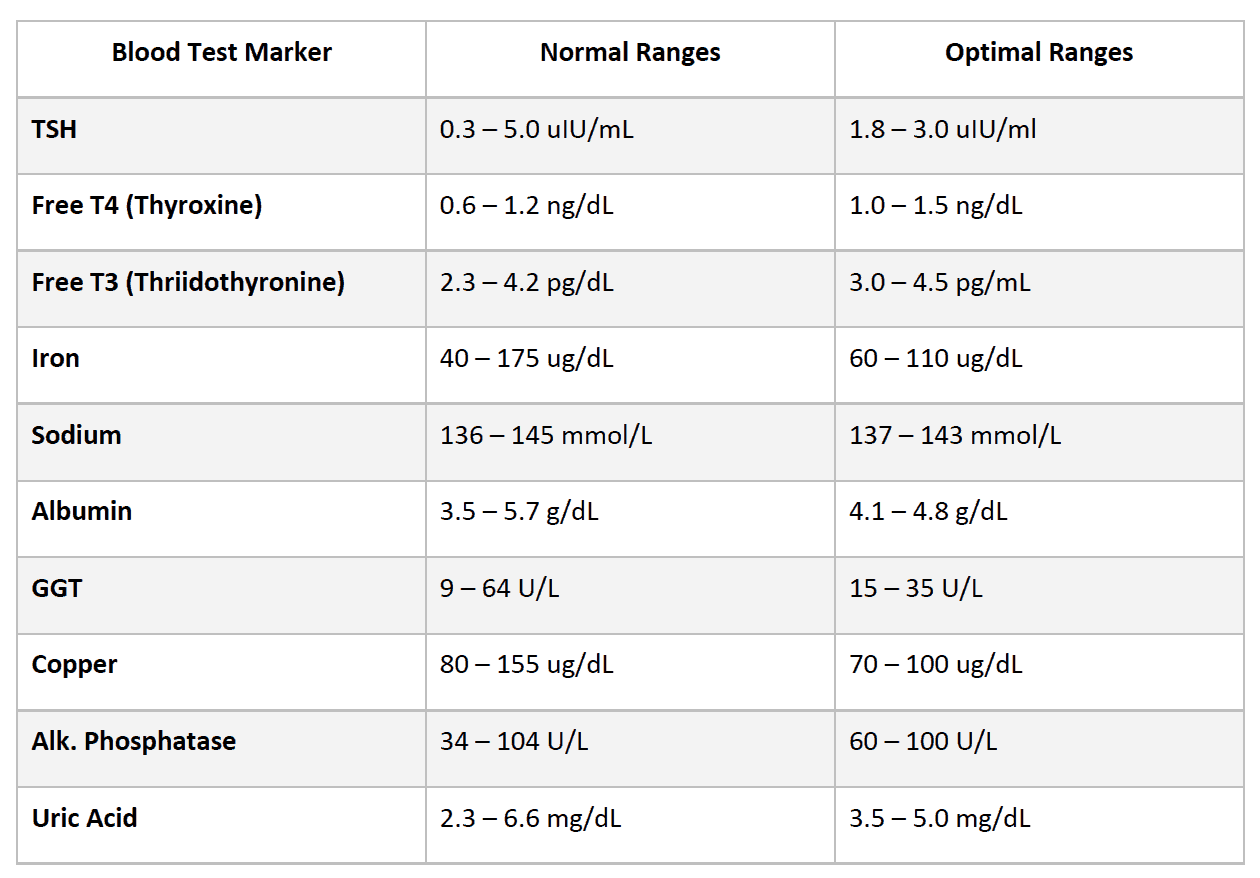
- Imaging techniques, such as elastography, to assess liver stiffness and fibrosis
- Breath tests to measure liver metabolism and function
- Genetic and molecular markers for early detection of liver disease
These non-invasive approaches may complement traditional blood tests like AST in the future, offering a more comprehensive evaluation of liver health with minimal patient discomfort.
Conclusion: The Significance of AST in Liver Health Management
Aspartate aminotransferase (AST) is a crucial enzyme that plays a significant role in assessing liver function and overall health. Understanding the normal range for AST, its implications, and the factors that can influence its levels is essential for both healthcare providers and patients. While elevated AST levels can be concerning, they should always be interpreted in the context of other liver function tests, clinical symptoms, and individual health factors.
Regular monitoring of AST levels, along with other liver function markers, can help detect potential liver problems early and guide appropriate interventions. By maintaining a healthy lifestyle, avoiding risk factors for liver disease, and working closely with healthcare providers, individuals can support their liver health and potentially prevent or manage conditions associated with elevated AST levels.

As research in liver function assessment continues to advance, we can expect more sophisticated and personalized approaches to interpreting AST results and managing liver health. This ongoing progress underscores the importance of staying informed about liver health and engaging in proactive discussions with healthcare providers about AST testing and liver function monitoring.
Aspartate aminotransferase (AST) blood test
Medical Tests
Definition
The aspartate aminotransferase (AST) blood test measures the level of the enzyme AST in the blood.
Alternative Names
Aspartate aminotransferase; Serum glutamic-oxaloacetic transaminase; SGOT
How the Test is Performed
A blood sample is needed.
How to Prepare for the Test
No special preparation is needed.
How the Test will Feel
When the needle is inserted to draw blood, some people feel moderate pain. Others feel only a prick or stinging. Afterward, there may be some throbbing or a slight bruise. This soon goes away.
Why the Test is Performed
AST is an enzyme found in high levels in the liver, heart, and muscles. It is also found in lesser amounts in other tissues. An enzyme is a protein that causes a specific chemical change in the body.
An enzyme is a protein that causes a specific chemical change in the body.
Injury to the liver results in release of AST into the blood.
This test is mainly done along with other tests (such as ALT, ALP, and bilirubin) to diagnose and monitor liver disease.
Normal Results
The normal range is 8 to 33 U/L.
Normal value ranges may vary slightly among different laboratories. Some labs use different measurements or may test different samples. Talk to your health care provider about the meaning of your specific test results.
What Abnormal Results Mean
An increased AST level is often a sign of liver disease. Liver disease is even more likely when the levels of substances checked by other liver blood tests have also increased.
An increased AST level may be due to any of the following:
AST level may also increase after:
- Burns (deep)
- Heart procedures
- Seizure
- Surgery
Pregnancy and exercise may also cause an increased AST level.
Risks
There is little risk involved with having your blood taken. Veins vary in size from one person to another and from one side of the body to the other. Taking blood from some people may be more difficult than from others.
Risks associated with having blood drawn are slight, but may include:
- Fainting or feeling lightheaded
- Excessive bleeding
- Multiple punctures to locate veins
- Hematoma (blood collecting under the skin)
- Infection (a slight risk any time the skin is broken)
References
Chernecky CC, Berger BJ. Aspartate aminotransferase (AST, aspartate transaminase, SGOT) – serum. In: Chernecky CC, Berger BJ, eds. Laboratory Tests and Diagnostic Procedures. 6th ed. St Louis, MO: Elsevier Saunders; 2013:172-173.
Pincus MR, Tierno PM, Gleeson E, Bowne WB, Bluth MH. Evaluation of liver function. In: McPherson RA, Pincus MR, eds. Henry’s Clinical Diagnosis and Management by Laboratory Methods. 23rd ed. St Louis, MO: Elsevier; 2017:chap 21.
Pratt DS. Liver chemistry and function tests. In: Feldman M, Friedman LS, Brandt LJ, eds. Sleisenger and Fordtran’s Gastrointestinal and Liver Disease. 10th ed. Philadelphia, PA: Elsevier Saunders; 2016:chap 73.
In: Feldman M, Friedman LS, Brandt LJ, eds. Sleisenger and Fordtran’s Gastrointestinal and Liver Disease. 10th ed. Philadelphia, PA: Elsevier Saunders; 2016:chap 73.
Review Date: 01/26/2019
The information provided herein should not be used during any medical emergency or for the diagnosis or treatment of any medical condition. A licensed physician should be consulted for diagnosis and treatment of any and all medical conditions. Call 911 for all medical emergencies. Links to other sites are provided for information only — they do not constitute endorsements of those other sites. Copyright ©2019 A.D.A.M., Inc., as modified by University of California San Francisco. Any duplication or distribution of the information contained herein is strictly prohibited.
Information developed by A.D.A.M., Inc. regarding tests and test results may not directly correspond with information provided by UCSF Health. Please discuss with your doctor any questions or concerns you may have.
High and low levels, and what do results mean
An AST blood test measures levels of aspartate aminotransferase (AST) and helps determine liver function. Too much of this enzyme can indicate a problem, such as liver damage.
Aspartate aminotransferase (AST) is an enzyme mostly found in the liver. AST is also present in other parts of the body, including the:
- kidneys
- heart
- muscles
Another name for the AST enzyme is serum glutamic-oxaloacetic transaminase (SGOT).
Most people have low levels of the AST enzyme. Damage to liver cells can cause the release of extra AST into the blood though, leading to higher levels of the enzyme.
After taking a blood test, doctors will classify AST ranges as normal, high, or low. Laboratories may use different testing methods for analyzing samples, so normal ranges can vary between each laboratory.
There is not an exact range for AST levels, as levels can vary among people and still be normal. AST levels can vary depending on factors such as:
AST levels can vary depending on factors such as:
- age
- sex
- weight
- race
The measurements for AST levels are typically in units per liter (U/L) or international units per liter (IU/L). On a test result, the laboratory will usually list their specific reference range.
People will need to look at this reference range and discuss with their doctor what their test results mean for them. To understand the results of an AST blood test, a doctor will also look at other enzymes that can indicate a liver problem.
The following table indicates general AST blood test ranges. However, reference ranges can vary slightly among different laboratories.
| Adults | Children | |
|---|---|---|
| Normal | 10–40 IU/L | |
| High | >36 U/L >1,000 U/L are very high levels and may be a sign of liver injury or hepatitis | >40 IU/L which may be a sign of liver inflammation |
Results from an AST blood test can help indicate liver health.+SI+units+(mmol/L)+Toxic+levels.+(mg/dL).jpg)
If AST levels are high, it may also be a sign of:
- chronic hepatitis
- damage from alcohol
- cholestasis, a decrease in bile flow
- heart, kidney, bone, or muscle damage
- liver cancers
- liver scarring, known as liver cirrhosis
Very high AST levels are usually a sign of progressing liver damage, often due to acute hepatitis.
Low AST levels may indicate:
- vitamin B6 deficiency
- kidney disease
- liver disease
- cirrhosis
- cancer
- autoimmune conditions
- genetic conditions
A doctor may also test levels of alanine aminotransferase (ALT), another liver enzyme. ALT levels occur in higher concentrations in the liver.
If ALT levels are normal but AST levels are high, it could indicate a health problem outside of the liver, or it may be a sign of alcohol-induced liver damage.
Having high levels of AST and no other signs of a problem is not necessarily a cause for concern. People with normal liver function can have high AST levels, which may be due to:
People with normal liver function can have high AST levels, which may be due to:
- age
- sex
- race
- certain medications
A person should always discuss any medications or health products they take with a doctor.
Doctors primarily use the AST blood test to check for and assess liver problems, usually alongside other liver tests. The AST protein mainly occurs in the liver and heart. With liver damage, AST can leak from the liver into the bloodstream. When this happens, AST levels in the blood will be higher than normal.
AST also occurs in the brain, heart, kidneys, and muscles. If there is damage in any of these areas, AST levels may also increase.
To rule out issues affecting areas outside the liver, doctors may order a check of the second liver enzyme, ALT, at the same time. If both levels are high, it may indicate a problem with a person’s liver. If only AST levels are high, this may indicate a problem with another organ or system.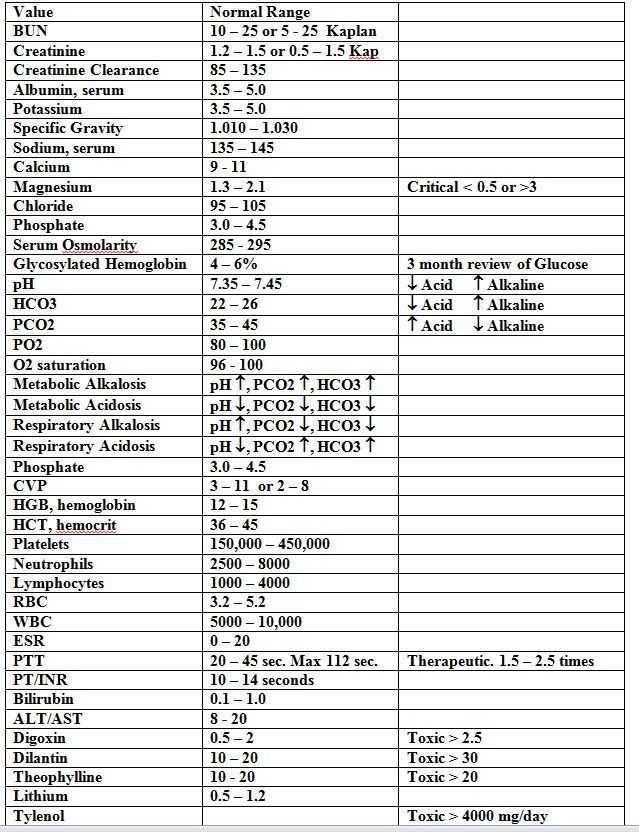
People may have an AST test for screening, diagnosis, or monitoring purposes. A doctor may recommend this test if a person:
- has risk factors for liver disease, such as family history, obesity, or diabetes
- has symptoms of a liver problem, such as jaundice, fatigue, or unexplained weight loss
- is undergoing treatment for a liver condition, as an AST blood test can help show how well treatment is working
Alanine aminotransferase (ALT) is an enzyme that mostly occurs in the liver. If there is damage to liver cells, ALT levels in the bloodstream can increase. An ALT test can help indicate liver health, along with other liver enzyme tests.
Healthcare professionals may use both ALT and AST tests to check for the presence of liver enzymes in the blood, as this can give them a clearer idea of overall liver function and health.
Learn more about the ALT test here.
The AST blood test is straightforward and similar to any other blood test. A healthcare professional may take the following steps:
A healthcare professional may take the following steps:
- sit the person down and tie a stretchy band around the upper arm to increase blood flow to that area
- clean the site of the blood draw with an antiseptic wipe
- insert a needle into a vein in the arm to take a blood sample, which may cause people to feel a mild prick or pain
- remove the needle once they have drawn enough blood
- send the blood sample to a laboratory for testing
An AST blood test will usually only take a few minutes in total.
In some cases, people may be able to take an AST test at home. Using an at-home test kit, people will take a blood sample from their fingertip and send the sample to a laboratory. People may receive AST blood test results through the mail, an app, or an online system.
Learn how long it might take to receive blood test results here.
Preparation
People may need to fast for several hours if they are having a combination of liver enzyme tests.
If people are only having an AST blood test, they may not need to fast or prepare in any way.
People will need to let their doctor know if they are taking any medications or supplements, as some may interfere with liver enzyme levels.
As a healthcare professional will be taking blood from the arm, it may be helpful to wear short sleeves during the test.
As with any blood test, an AST blood test has very few risks. It is rare to experience any severe side effects, but people may have some mild bruising or discomfort in the area at the site of the blood draw.
A healthcare professional will place a Band-Aid or bandage on the arm to stop any bleeding.
People may want to have something to eat after the test, particularly if they were fasting beforehand. It is safe for people to drive and continue their usual activities after an AST blood test, unless they experience any unusual symptoms.
A doctor may order tests along with an AST blood test or follow-up tests. This is to help ensure proper diagnosis and determine the best course of treatment. These tests may include:
This is to help ensure proper diagnosis and determine the best course of treatment. These tests may include:
- ALT test: A doctor may order an ALT test alongside an AST test.
- Platelet count: Low platelet levels may indicate HELLP syndrome during pregnancy.
- Coagulation panel: This measures the functioning of clotting-related proteins that the liver produces.
- Complete metabolic panel: This assesses how well the kidneys and liver are working and shows levels of electrolytes.
- Bilirubin test: A bilirubin test checks levels of a byproduct created when the liver breaks down red blood cells.
- Glucose test: High or low blood glucose levels may indicate a liver problem.
- Viral testing: This can help doctors check for hepatitis.
- Imaging: A doctor may order images of the liver via ultrasound.
The extent of follow-up testing will depend on a person’s results. A doctor may also take additional blood tests, imaging tests, or a biopsy to identify or rule out any potential conditions relating to abnormal AST levels.
A doctor may also take additional blood tests, imaging tests, or a biopsy to identify or rule out any potential conditions relating to abnormal AST levels.
Learn about different types of blood tests here.
An AST blood test, or SGOT test, checks how much AST, a liver enzyme, is present in the blood. High levels of AST in the bloodstream could be a sign of liver damage, or cell damage in another organ such as the heart or kidneys.
Doctors may also take additional tests to check other liver enzymes, such as ALT, to get more information on the health of the liver.
what are the norms and what does the deviation mean?
Contents
- 1 Normal ALT and AST values in women: how to evaluate your liver
- 1.1 ALT and AST – what are they?
- 1.2 Related videos:
- 1.3 Blood test for ALT and AST
- 1.4 Normal ALT and AST in women
- 1.5 Abnormal ALT and AST from the norm
- 1.6 Reasons for increasing the level of ALT and AST in women
- 1.
 7 Diseases that cause elevated levels of ALT and AST in women
7 Diseases that cause elevated levels of ALT and AST in women- 1.7.1 Hepatitis
- 1.7.2 Cirrhosis of the liver
- 1.7.3 Obesity
- 1.7.4 Other diseases
- 1.8 Symptoms of elevated levels of ALT and AST in women 9000 8
- 1.9 Diagnosing elevated ALT and AST
- 1.10 What to do with elevated ALT and AST
- 1.11 Treating elevated ALT and AST
- 1.12 Nutrition for elevated ALT and AST
- 1. 12.1 Introduction
- 1.12.2 What to use
- 1.12.3 What to avoid
- 1.12.4 Cooking tips
- 1.12.5 Conclusion
- 1.13 Prevention of elevated ALT and AST
- 1.14 Consequences of elevated ALT and AST levels
- 1.15 Comparison with elevated levels of other blood parameters
- 1.16 ALT and AST testing for hepatitis
- 1.16.1 Alanine aminotransferase and Aspartate aminotransferase
- 1.16 .2 How to prepare for an ALT and AST test
- 1.
 16.3 What the test results mean
16.3 What the test results mean
- 1.17 Effects of ALT and AST on pregnancy
- 1.18 When to see a doctor if ALT and AST levels are elevated
- 1.19 Q&A:
- 1.19.0.1 What are Alt and Ast and why are these indicators needed in the analyzes of women?
- 1.19.0.2 What are the normal levels of Alt and Ast in women?
- 1.19.0.3 What can cause an increase in Alt in women?
- 1.19.0.4 What causes an increase in the Ast level in women?
- 1.19.0.5 What does low Alt mean in women?
- 1.19.0.6 What can it mean if the level of Alt and Ast is simultaneously elevated in women?
- 1.19.0.7 Can a low Ast level in women indicate the absence of liver problems?
- 1.19.0.8 How long do elevated levels of Alt and Ast persist in women after drinking alcohol?
Find out which ALT and AST values are normal for women. Useful information about the functions of these indicators and the causes of deviations from the norm.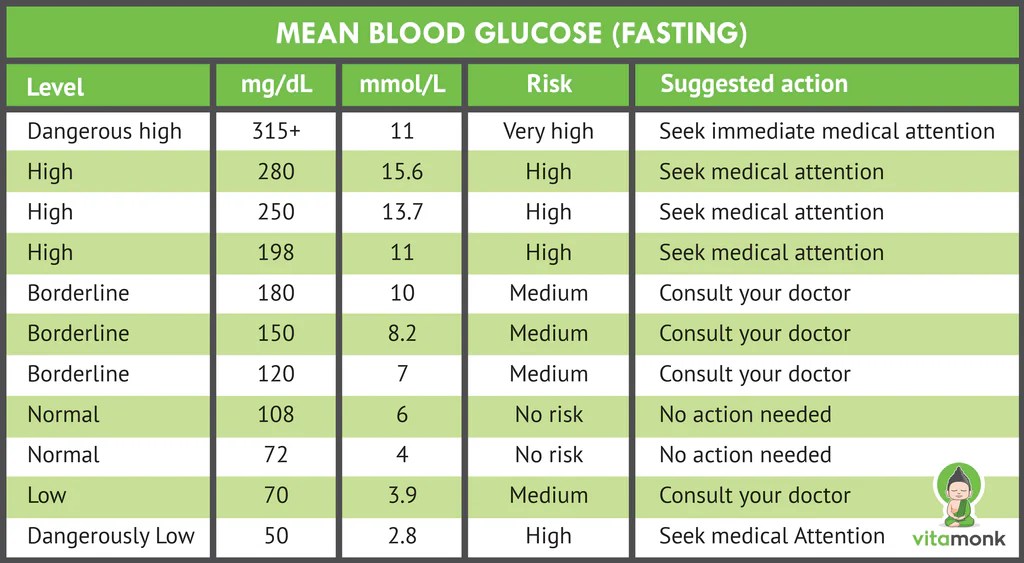
Alt and Ast are enzymes that are responsible for the functioning of the liver. If their blood levels are elevated, this may indicate a liver problem. A blood test for alt and ast is usually ordered in case of suspected liver disease, but what does a deviation in the level of these enzymes mean in women?
ALT and AST blood levels in women depend on many factors, including age, sex, disease, and medication. But in general, the alt level in women should not exceed 31 units/l, and the ast level should not exceed 34 units/l.
Abnormal alt and ast levels in women may indicate liver problems such as hepatitis, cirrhosis, tumors, and gallstones. However, keep in mind that elevated levels of alt and ast are not always indicative of liver disease. Some medications, such as aspirin, pain pills, and antibiotics, can increase blood levels of these enzymes.
If you have been tested for alt and ast and your blood levels of these enzymes are elevated, be sure to discuss the results with your doctor. He will be able to assess your ALT and AST levels in the context of your health and determine if additional testing or treatment is needed.
He will be able to assess your ALT and AST levels in the context of your health and determine if additional testing or treatment is needed.
ALT and AST – what is it?
Alanine aminotransferase (ALT) and aspartate aminotransferase (AST) are enzymes found inside liver cells. If liver cells are damaged or destroyed, these enzymes enter the bloodstream. Therefore, an increase in the level of ALT and AST in the blood may indicate the presence of problems with the liver or other organs.
ALT is mainly present in liver cells, but can also be found in heart cells and other tissues. AST is present in the cells of the liver, heart, muscles and other organs.
ALT and AST are often used together in the diagnosis of liver diseases such as hepatitis and cirrhosis. These enzymes can also be elevated in myocardial infarction, rheumatic diseases, and other problems.
Related videos:
youtube.com/embed/e85W3VHgk_M” frameborder=”0″ allowfullscreen=”allowfullscreen”>
Blood test for ALT and AST
Blood test for ALT (alianine aminotransferase) and AST (aspartate aminotransferase) is one of the most common methods for diagnosing diseases of the liver and heart. Both are enzymes that are normally found inside the cells of the liver and heart, but if these organs become damaged or inflamed, ALT and AST are released from the cells into the blood, causing their blood levels to rise.
ALT is routinely screened to diagnose liver diseases such as hepatitis, cirrhosis, and liver cancer. ALT levels can also be elevated with certain medications, jaundice, gallbladder disease, and inflammatory diseases of the biliary tract.
AST, on the other hand, can be elevated in a number of conditions, including heart disease, myocardial infarction, liver disease, and muscle disease. AST levels can also be elevated when taking certain medications.
Elevated levels of ALT and AST in the blood may indicate a specific disease, but these indicators cannot indicate a specific condition. To detect the disease, additional research and examinations are necessary.
In general, elevated levels of ALT and AST usually indicate damage to some organs in the body. If you are found to have elevated levels of ALT or AST, you should undergo further tests to find out which organs are damaged and begin treatment under the guidance of a qualified physician.
Yes
100%
ALT and AST levels in women
Alanine aminotransferase (ALT) and aspartate aminotransferase (AST) are indicators of liver function. Normal blood levels of these enzymes may vary depending on the methodology of the laboratory, as well as the age, sex, and weight of the patient. However, on average, ALT and AST in women have the following norms:
- ALT: up to 34 units / l;
- AST: up to 31 units/l.
If a woman’s ALT and AST levels are higher than normal, this may indicate liver problems such as inflammation, fatty degeneration, or cirrhosis.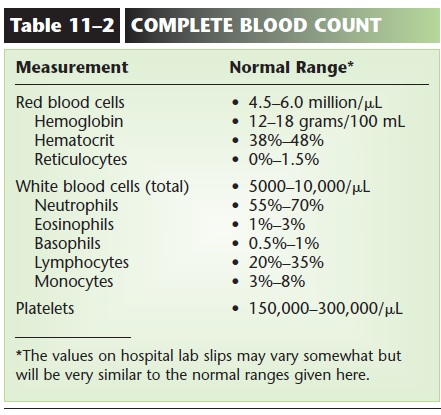 However, another underlying cause may also be present, such as alcohol or drug poisoning, drug injection, or heart or muscle disease.
However, another underlying cause may also be present, such as alcohol or drug poisoning, drug injection, or heart or muscle disease.
If you have been prescribed ALT and AST tests and find that these levels are abnormal, you should consult your doctor to determine the cause and prescribe the appropriate treatment.
ALT and AST abnormal
Alanine aminotransferase (ALT) and aspartate aminotransferase (AST) are enzymes that help the body make proteins. Normal levels of ALT and AST in women can vary, but are usually in the range of 7-56 units/L for ALT and 10-40 units/L for AST.
Abnormal ALT and AST levels may indicate the presence of liver disease such as hepatitis or cirrhosis. If the level remains elevated for a long time, it can lead to serious complications, including liver failure or liver cancer.
ALT and AST levels may also be elevated in other conditions such as myocardial infarction, pneumonia, or myopathies. This can help diagnose these conditions and track their treatment.
If the levels of ALT and AST strongly deviate from the norm, it is recommended to consult a doctor for additional examination and determination of the cause of such deviation. Early detection and treatment of diseases that can lead to elevated levels of ALT and AST can help maintain health and prevent serious complications.
Causes of increased levels of ALT and AST in women
AST (aspartate aminotransferase) and ALT (alanine aminotransferase) are enzymes that are involved in the process of amino acid metabolism. They are found in the cells of the liver, heart muscle, kidneys and other tissues of the body. If ALT and AST levels are elevated in a woman, this may indicate the presence of the following reasons:
- Liver disease: elevated levels of ALT and AST may indicate the presence of hepatitis, liver cirrhosis, fatty degeneration and other pathological changes. At the same time, ALT levels may rise earlier than AST.
- Taking medications: Many medications can increase blood levels of ALT and AST.
 This is especially true of hepatotoxic drugs that have a negative effect on the liver.
This is especially true of hepatotoxic drugs that have a negative effect on the liver. - Alcoholic liver injury: the presence of an alcoholic mixture can lead to elevated levels of ALT and AST.
- Myocarditis, hypoxia of the heart muscle: when the heart muscle is affected, AST levels can rise much faster than ALT.
- Non-specific elevation: ALT and AST levels may be elevated with various infectious diseases, trauma and surgery.
In any case, if the level of ALT and AST in a woman is elevated, this requires a mandatory examination and identification of the cause in order to prescribe an effective treatment.
Diseases that cause elevated levels of ALT and AST in women
Hepatitis
Elevated levels of ALT and AST may be associated with hepatitis, an inflammation of the liver that can be caused by viruses, alcohol, drugs, and other factors. In hepatitis, ALT and AST are higher than normal due to damage to liver cells and the release of enzymes into the blood.
Cirrhosis of the liver
Cirrhosis of the liver is characterized by the gradual accumulation of damage to the liver cells, which can cause an increase in the level of ALT and AST. With cirrhosis of the liver, the function of the organ is impaired, which can lead to serious consequences.
Obesity
Obesity can be one of the causes of elevated levels of ALT and AST. Fat accumulates in the liver, which can cause it to malfunction and release enzymes into the blood.
Other diseases
Elevated levels of ALT and AST may also be associated with rarer diseases such as myopathy, muscle wasting, thrombosis, myocardial infarction and others. You need to see a doctor for an accurate diagnosis and treatment.
Symptoms of elevated ALT and AST levels in women
ALT (alanine aminotransferase) and AST (aspartate aminotransferase) are enzymes found inside the cells of the liver and other organs. Elevated levels of ALT and AST in the blood can indicate problems with the liver, heart, muscles, and other organs.
In women, elevated levels of ALT and AST may present with the following symptoms:
- Jaundice (a yellowish tinge to the skin and whites of the eyes)
- Enlargement of the liver and spleen
- Nausea and vomiting
- Increased fatigue and weakness
- Decreased appetite
- Pain in the abdomen or in the right upper quadrant of the abdomen
- Hypersensitivity to drugs and alcohol
- Muscle pain and spasms
If you notice any of these symptoms, you should see a doctor for diagnosis and treatment. He may order blood tests for ALT and AST levels, as well as other types of tests to identify possible problems with the body.
Do not ignore the symptoms of elevated levels of ALT and AST, as these enzymes can indicate serious diseases that require competent medical attention.
Diagnosis of elevated levels of ALT and AST
A special blood test is performed to detect the level of hormones ALT and AST. This test can help diagnose various diseases of the liver, heart, and muscles.
This test can help diagnose various diseases of the liver, heart, and muscles.
ALT and AST levels may be elevated in the presence of viral hepatitis, alcoholic or toxic hepatitis, liver cirrhosis, infectious mononucleosis, heart and muscle disease. In some cases, an increase in hormone levels may be due to medications taken or tissue damage resulting from an injury.
If the ALT and AST levels are above normal, further investigations are needed to determine the cause of the deviation. Do not panic in advance, because elevated hormone levels do not always indicate a serious illness.
It is important to understand that self-monitoring of ALT and AST levels at home is not sufficient to establish a diagnosis. To do this, you should consult a doctor and perform the recommended tests.
What to do with elevated ALT and AST
If you have been diagnosed with elevated levels of ALT and AST in the blood, do not panic, but do not ignore this fact either. First you need to determine the reason for such a deviation.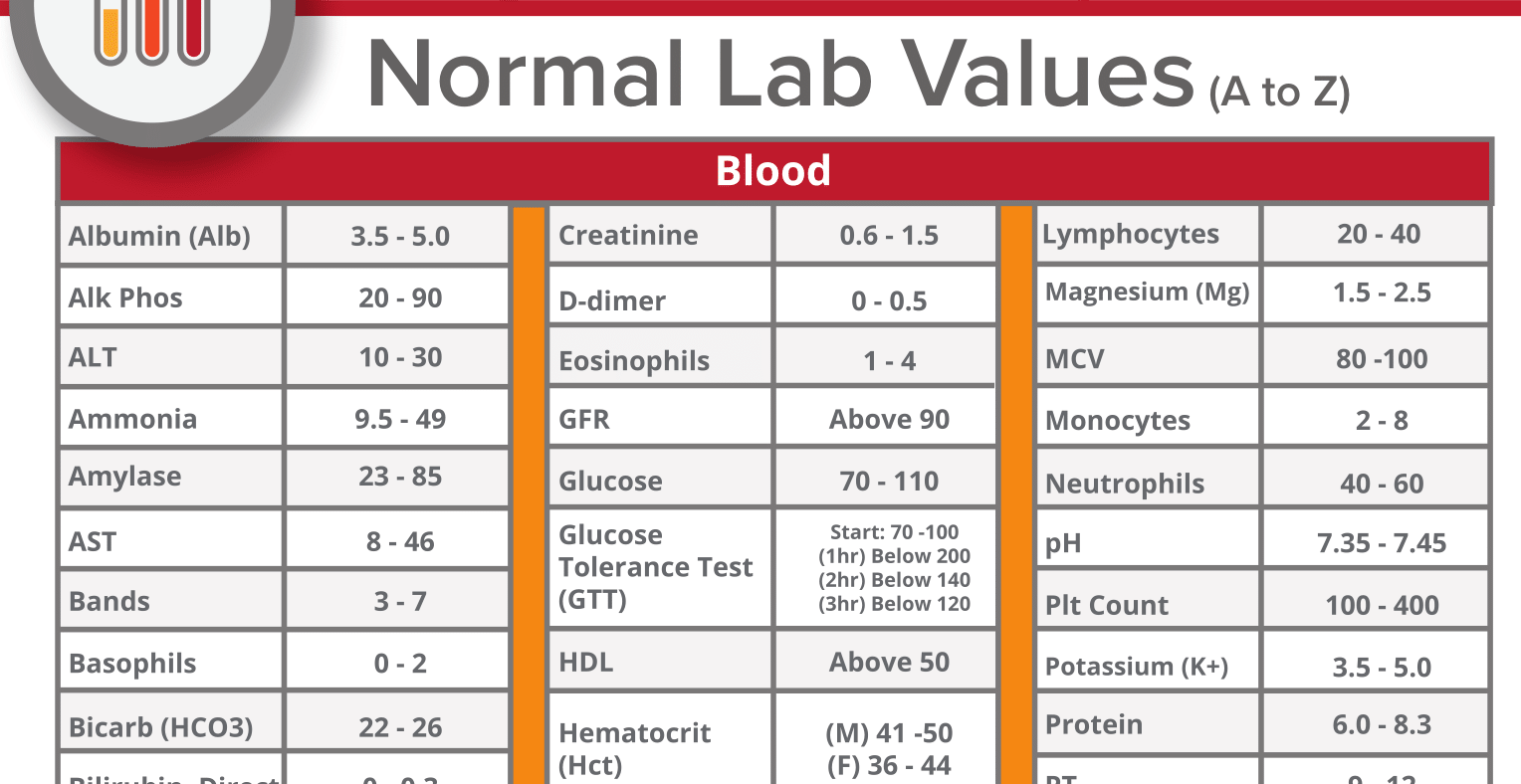 Usually, elevated levels of ALT and AST indicate complications in the liver.
Usually, elevated levels of ALT and AST indicate complications in the liver.
If elevated levels of ALT and AST are caused by a disease or infection, then the doctor may prescribe appropriate treatment, which is aimed at eliminating the reasons for the increase in these levels.
However, sometimes elevated levels of ALT and AST may indicate the presence of chronic diseases of the liver or other organs. In this case, it is necessary to undergo an examination to determine the causes of this condition and prescribe a suitable treatment.
To lower your ALT and AST levels, you need to follow a proper diet, stop bad habits, take the right medications, and have regular medical checkups.
In any case, ALT and AST levels should be monitored regularly. If you find deviations from the norm, you should consult a doctor in a timely manner and undergo an additional examination to find out the causes and prevent possible complications.
Treatment of elevated ALT and AST
As markers of liver damage, ALT and AST are important indicators of liver disease. If ALT and AST levels are high, treatment depends on the underlying cause of the condition.
If ALT and AST levels are high, treatment depends on the underlying cause of the condition.
If elevated levels of ALT and AST are due to alcoholic or viral hepatitis, then the main treatment is the treatment of the underlying disease. In cases of liver failure, increased protein intake and dietary elasticity may be prescribed.
If elevated levels of ALT and AST are associated with medication or supplements, then these drugs should be discontinued. You may have to replace them with safer alternatives.
For people with elevated ALT and AST levels, it is imperative to control alcohol consumption and the abuse of fatty, rich foods.
Based on the above, you need to understand that elevated levels of ALT and AST require careful consideration and analysis of the causes. Only then can you find the appropriate treatment and make the necessary adjustments in your lifestyle and diet.
Nutrition with elevated ALT and AST levels
Introduction
Women with elevated ALT and AST levels should pay attention to their diet. Diet can have a big impact on the levels of these enzymes in the blood, so it is recommended to follow certain rules when compiling your daily menu.
Diet can have a big impact on the levels of these enzymes in the blood, so it is recommended to follow certain rules when compiling your daily menu.
What to eat
When ALT and AST levels are elevated, a healthy diet is given special attention. Women should eat more fresh fruits and vegetables, as well as protein foods such as fish, chicken, eggs, and cottage cheese. It is also recommended to drink plenty of fluids, including clean water.
What to avoid
Women should limit their intake of fatty and fried foods, as well as sweets and alcohol, to avoid elevated ALT and AST levels. In addition, it is recommended to avoid too much coffee and strong tea.
Cooking Tips
One way to preserve the benefits of food is to prepare it properly. Women should prefer steamed or grilled dishes. Also, if possible, it is necessary to exclude frying in oil and give preference to cold appetizers and salads.
Conclusion
By following simple healthy dietary guidelines, women can lower their blood levels of ALT and AST.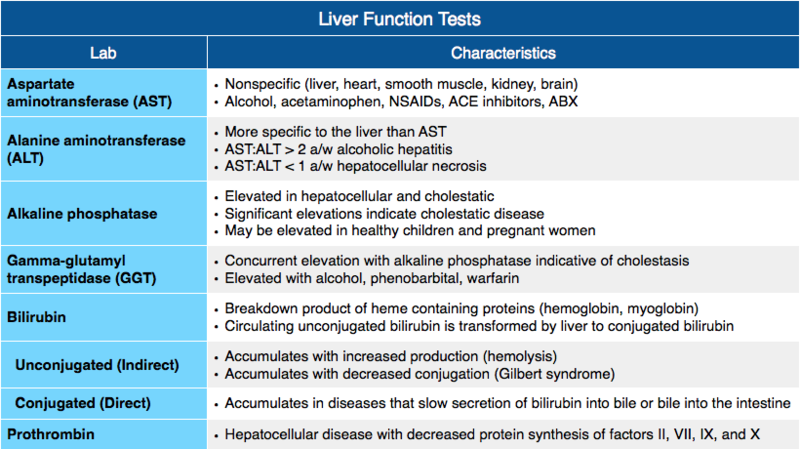 Regular consumption of fresh fruits and vegetables, protein foods, limiting fatty, fried and sugary foods, and proper cooking will help maintain a healthy liver and improve overall body health.
Regular consumption of fresh fruits and vegetables, protein foods, limiting fatty, fried and sugary foods, and proper cooking will help maintain a healthy liver and improve overall body health.
Preventing elevated ALT and AST levels
Maintaining a healthy liver and preventing elevated ALT and AST levels in women requires a healthy lifestyle:
- Avoid alcohol and nicotine;
- Watch your diet and avoid fatty, fried and salty foods;
- Maintain a healthy weight and avoid excess weight;
- Exercise regularly;
- Avoid stress and nervous overload;
- Monitor the level of hormones in the body, especially when taking hormonal drugs.
It is also recommended to undergo regular medical examinations and seek medical attention at the first symptoms of liver disease: pain in the right hypochondrium, nausea, vomiting, jaundice, loss of appetite and drowsiness.
If the level of ALT and AST in the blood of a woman is elevated, then it is necessary to consult a doctor for additional examination and determination of the cause of the deviation.
Sample diet to prevent elevated ALT and ASTV Time Meal
| 8:00 | Breakfast: oatmeal with water, apple, green tea |
| 11: 00 | Snack: fruit yogurt, nuts |
| 14:00 | Lunch: grilled chicken breast, steamed vegetables, a piece of rye bread, water |
| 17:00 9 0330 | Snack: fresh vegetables, rye bread toast, green tea |
| 20:00 | Dinner: steamed fish, vegetable salad, slice of rye bread, water |
Consequences of elevated levels of ALT and AST
Elevated levels of ALT and AST usually indicate liver dysfunction. Such violations can be caused by various reasons: from alcohol or drug intoxication to viral infections or cancer.
One of the first signs of elevated levels of ALT and AST are yellowing eyes and skin, which indicate a violation of the outflow of bile. Other signs may include pain in the right side, bloating, nausea, vomiting, and general weakness.
These signs should not be ignored, as elevated levels of ALT and AST can lead to serious consequences. For example, it can cause cirrhosis of the liver, which in turn can lead to liver cancer and other dangerous diseases. Therefore, if suspicious symptoms appear, you should consult a doctor and undergo an appropriate examination.
- Suspected or developing acute hepatitis
- Confirmed chronic hepatitis
- Suspected gallbladder disease
- May be caused by certain drugs or high alcohol intake
If found elevated a high level of ALT and AST, measures must be taken to eliminate the cause of its occurrence. For this, special medications, diet, avoidance of alcohol and other suitable measures can be prescribed.
Comparison with elevated levels of other indicators in the blood
The presence of elevated levels of alanine aminotransferase (Alt) and aspartate aminotransferase (AST) can be caused not only by diseases of the liver, cardiovascular system and muscle tissue, but also by the presence of other indicators in the blood, such as iron, glucose, cholesterol and others.![]()
When comparing the levels of Alt and Ast with other indicators, it is necessary to take into account the possible mechanisms for increasing the levels of these enzymes. For example, an increase in the level of Alt and Ast may be associated with a violation of iron metabolism in the body, which leads to its accumulation in the liver and intensive destruction of liver cells.
However, in the presence of elevated levels of Alt and Ast in combination with other indicators, it is necessary to conduct an additional examination to determine the cause of the increase and further treatment.
- Elevated blood glucose may indicate diabetes.
- Elevated cholesterol levels may be associated with impaired lipid metabolism in the body.
- Elevated iron levels may indicate the presence of hemochromatosis.
ALT and AST hepatitis test
Alanine aminotransferase and Aspartate aminotransferase
ALT and AST are enzymes that are found inside liver cells.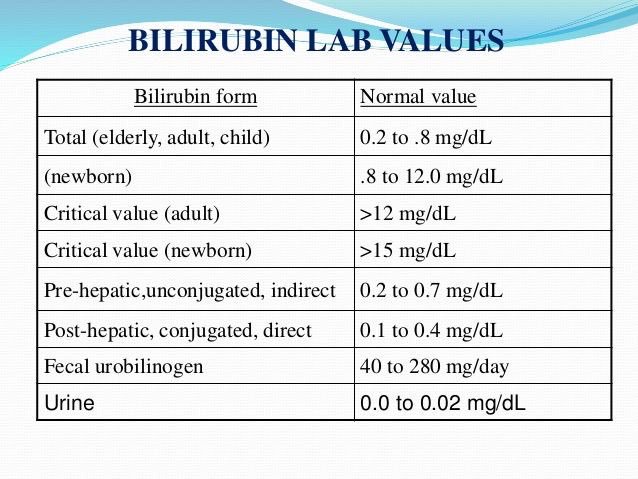 They are involved in the metabolism of amino acids and help the body get energy from food. High levels of ALT and AST can indicate liver problems, which is why they are usually included in a standard CBC.
They are involved in the metabolism of amino acids and help the body get energy from food. High levels of ALT and AST can indicate liver problems, which is why they are usually included in a standard CBC.
One of the most common blood tests for ALT and AST levels is a hepatitis test. Hepatitis is an inflammatory disease of the liver that can be caused by infection, alcohol, or toxins. ALT and AST may be elevated in viral hepatitis, and their rise may reflect the degree of liver damage.
How to prepare for an ALT and AST test
To prepare for an ALT and AST test, you must give blood samples. No other special preparatory measures are required. However, alcohol consumption should be limited prior to testing, as it can increase blood levels of ALT and AST.
What the test results mean
The normal range for ALT and AST levels in the blood may vary depending on the laboratory that performs the test. Generally, ALT and AST levels should not exceed 30 to 40 units per liter (U/L) in women. If the level of ALT and AST is elevated, then this may indicate a toxic or infectious liver lesion.
If the level of ALT and AST is elevated, then this may indicate a toxic or infectious liver lesion.
If the results of the analysis show high levels of ALT and AST, then it is necessary to consult with your doctor to identify the possible cause of the elevated ALT and AST levels and begin treatment.
The effect of ALT and AST on pregnancy
ALT and AST are indicators that can be measured in the blood of a pregnant woman at different stages of pregnancy. They play an important role in assessing the health of the liver, but can also indicate problems with the heart and muscles.
Studies show that elevated levels of ALT and AST in the blood of a pregnant woman can indicate the presence of infection, hepatitis, many other diseases, and also negatively affect the development of the child.
Although elevated levels of ALT and AST alone are not dangerous for pregnancy, if the levels of both are elevated, action must be taken. In this case, the woman should consult a doctor and undergo additional examinations.
In addition, maintaining a healthy lifestyle and proper diet can help reduce the risk of elevated ALT and AST levels. Pregnant women need to pay special attention to their health and monitor the level of these indicators in the blood in order to ensure the health of their child and themselves in general.
When to see a doctor if ALT and AST levels are elevated
If a woman’s blood levels of alanine aminotransferase (ALT) and aspartate aminotransferase (AST) are elevated, it may be a symptom of various diseases of the liver, cardiovascular system and other organs.
If a woman notices symptoms such as fatigue, nausea, jaundice, right upper quadrant tenderness, she should seek immediate medical attention.
It is also recommended that women undergo regular medical examinations in order to identify possible problems of the disease at an early stage.
To diagnose the level of ALT and AST, it is necessary to donate blood for biochemical analysis, which can determine the presence of pathological changes.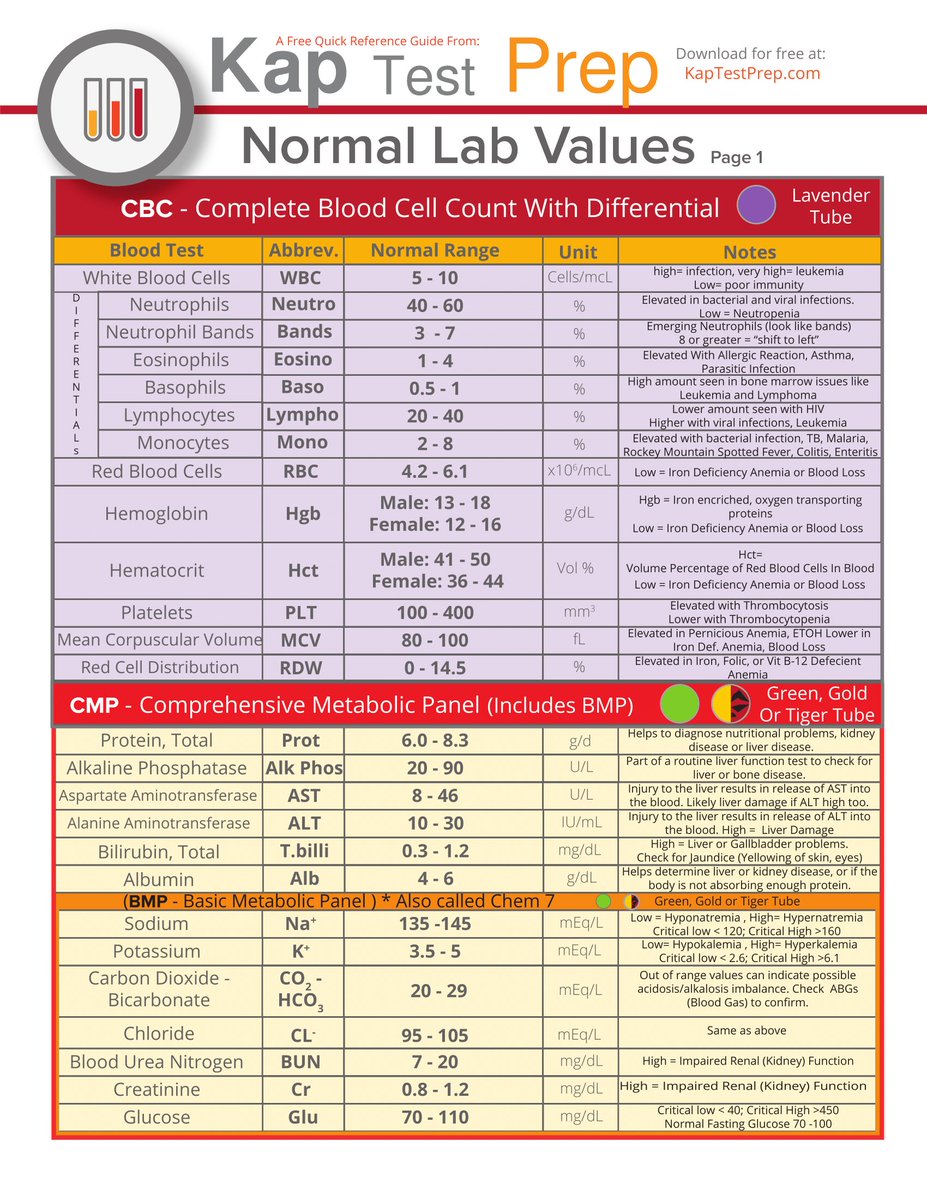
If ALT and AST levels are elevated, the doctor may order additional tests to determine the cause of the abnormality and prescribe appropriate treatment.
Question-answer:
What are Alt and Ast and why are these indicators needed in the analyzes of women?
Alt (alanine aminotransferase) and Ast (aspartate aminotransferase) are enzymes that are found in liver cells and are involved in amino acid metabolism. Their blood levels help diagnose liver disease and assess liver function. When deviating from the norm, Alt and Ast can indicate various pathologies that need to be identified and treated.
What are the normal levels of Alt and Ast in women?
The norm of Alt in women is 10-40 U/l, and the norm of Ast is 10-30 U/l. However, these values may differ depending on the laboratory that performs the analysis. Therefore, when studying the results, it is necessary to be guided by the standards specified in the laboratory where the analyzes were carried out.
What can cause an increase in Alt in women?
An increase in the level of Alt in the blood in women can be caused by diseases such as viral hepatitis, cirrhosis of the liver, fatty liver, as well as alcohol or toxic drugs. Also, an increase in Alt levels may be associated with muscle damage, along with damage to liver cells.
What causes an increase in Asth levels in women?
An increase in the level of Ast in the blood in women can be caused by liver pathologies (cirrhosis, hepatitis), myocardial infarction, encephalopathy, jaundice. Also, an increase in the level of Ast can be observed in oncological diseases, alcoholism and the use of toxic drugs.
What does low Alt mean in women?
Decrease in the level of Alt in the blood is not a pathology and in itself does not cause any symptoms. However, if the Alt level is reduced, but the Ast level remains normal, then this may indicate a violation of liver function and require further examination and diagnosis.
What can it mean if the level of Alt and Ast is simultaneously increased in women?
Simultaneous elevation of Alt and Ast may indicate various liver diseases such as hepatitis, cirrhosis or cancer. Also, an increase in the level of Alt and Ast may be associated with dysfunction of other organs, such as skin, muscles and pancreas. The final diagnosis can only be made after a comprehensive examination and exclusion of other pathologies.
Can a low Ast level in women indicate the absence of problems with the liver?
No, low Ast levels in the blood are not a sufficient criterion for assessing the health of the liver. For a complete diagnosis, it is necessary to conduct a comprehensive examination and analysis of other biochemical blood parameters that will help identify possible pathologies.
How long do elevated Alt and Ast levels persist in women after drinking alcohol?
Increased levels of Alt and Ast in the blood of women may persist up to 4-5 days after drinking alcohol. The more often and more alcohol is consumed, the longer elevated levels of these indicators persist. Stopping alcohol consumption helps bring Alt and Ast levels back to normal levels. However, if elevated levels of Alt and Ast do not decrease for a long time, additional diagnostics and examination are necessary.
The more often and more alcohol is consumed, the longer elevated levels of these indicators persist. Stopping alcohol consumption helps bring Alt and Ast levels back to normal levels. However, if elevated levels of Alt and Ast do not decrease for a long time, additional diagnostics and examination are necessary.
Aspartate aminotransferase (AST, AST): norm and interpretation
Aspartate aminotransferase (AST, AST ) is an enzyme involved in biochemical processes inside cells. AST accelerates the transfer of amino groups from aspartate (and ALT from alanine, respectively) in the Krebs cycle, which is a key step in the respiration process for all cells. Note that AST performs its functions together with vitamin B 6 , although AST is less sensitive to a decrease in the content of B 6 in the body than ALT . By the way, this is the reason why in patients with alcoholic liver disease, the concentration of ALT in the blood decreases more significantly than AST , which contributes to an increase in the ratio of AST / ALT , because the systematic use of alcohol significantly reduces the content of vitamin B 6 in the blood.
Both aminotransferases are concentrated in liver tissues, however AST is also present in the heart, skeletal muscle, kidney, brain, and erythrocytes. In the liver ALT is concentrated exclusively in the cellular cytoplasm, while AST is found in the cytosol and mitochondria. The circulatory half-life is about 47 hours for ALT and about 17 hours for AST .
To assess the change in level AST use the classification:
- Soft change – an increase of less than 5 times the maximum allowable limit,
- Moderate change – 5 to 10 times normal,
- Marked change – more than 10 times normal.
However, given the blurring of the boundary between mild and moderate changes, they are considered one group.
The norm for children and adolescents is somewhat different from the norm for adults:
| Age | AST content, U / l |
|---|---|
up to 97.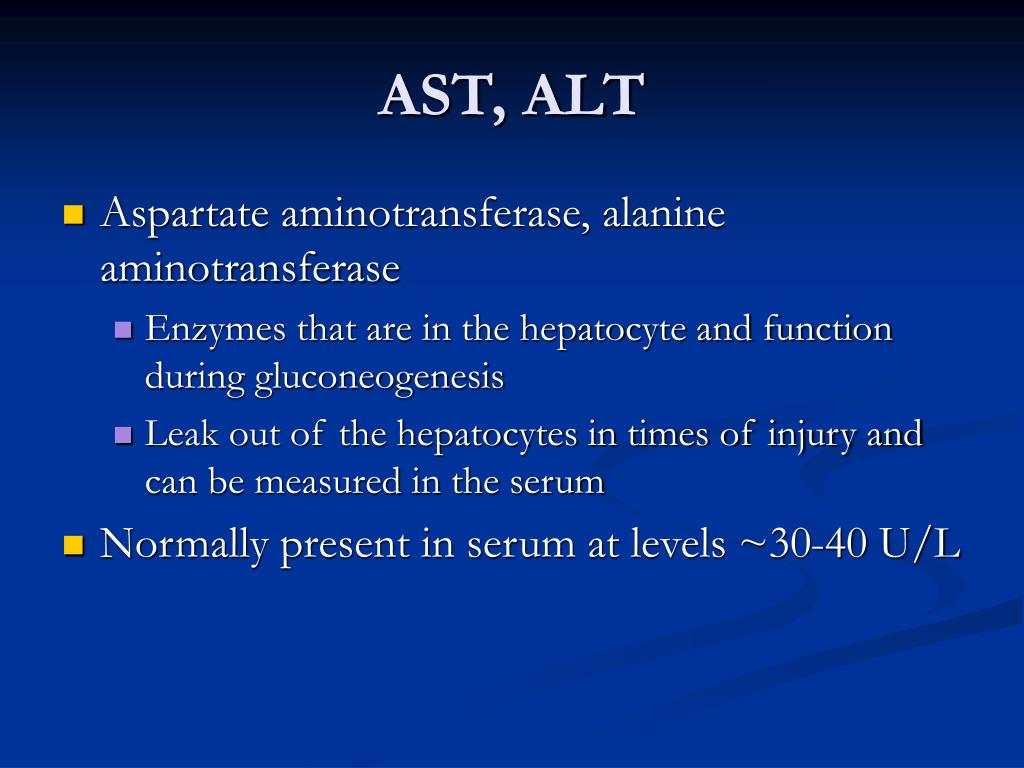 0 0 | |
| 5 days–6 months | up to 77.0 |
| 6–12 months | up to 82.0 9 0330 |
| 1-3 years | up to 48.0 |
| 3-6 years | up to 36.0 |
| 6-12 years | up to 47.0 |
| 12–17 years (women) | up to 25.0 |
| 12–17 years (men) | up to 29.0 |
Normally, only a small part of it is in the blood. When tissues rich in this enzyme are damaged, it enters the bloodstream, which is detected by laboratory methods. Abrupt changes in the content of aspartate aminotransferase occur with damage to the heart muscle – myocardium (for example, with myocardial infarction). The concentration of this enzyme in the blood of 93−98% of patients with myocardial infarction increased. In this case, AST increases in serum after 6-8 hours, it reaches its maximum concentration after 24-36 hours and decreases to a normal level by the 5-6th day. An increase in the area of the heart muscle affected by a heart attack (repeated heart attack) leads to the appearance of a second cycle of increasing the concentration of aspartate aminotransferase . Sometimes the activity of AST increases even before the appearance of electrocardiographic signs of myocardial infarction, and the absence of a decrease in its level after the 3rd–4th day of the disease is considered an unfavorable sign.
An increase in the area of the heart muscle affected by a heart attack (repeated heart attack) leads to the appearance of a second cycle of increasing the concentration of aspartate aminotransferase . Sometimes the activity of AST increases even before the appearance of electrocardiographic signs of myocardial infarction, and the absence of a decrease in its level after the 3rd–4th day of the disease is considered an unfavorable sign.
Patients with a marked increase in aminotransferase levels (greater than 10-fold) are usually diagnosed with acute liver disease. However, data for a number of patients with acute liver injury caused by viral hepatitis suggest that the most sensitive and specific threshold level of aminotransferases for detecting acute lesions lies within the moderate range (5 to 10 times normal). In cases of acute viral hepatitis, the level of AST typically peaks before jaundice develops and gradually decreases thereafter; in parallel, the level of bilirubin in the blood serum increases. However, jaundice occurs in about 70% of cases of acute hepatitis A, 33%-50% of cases of acute hepatitis B, and 20%-33% of cases of acute hepatitis C. The entire spectrum of viral hepatitis (A, B, C, D and E) may be responsible for the marked increase in the level of AST and ALT , although the increase associated with hepatitis C tends to be more modest than that associated with hepatitis A or B. hepatitis infections) or clinical symptoms, the levels of IgM antibodies to hepatitis A and B viruses, hepatitis B surface antigens and antibodies to hepatitis C virus should be checked, and, if necessary, polymerase chain reaction (PCR) methods for these viruses should be used.
However, jaundice occurs in about 70% of cases of acute hepatitis A, 33%-50% of cases of acute hepatitis B, and 20%-33% of cases of acute hepatitis C. The entire spectrum of viral hepatitis (A, B, C, D and E) may be responsible for the marked increase in the level of AST and ALT , although the increase associated with hepatitis C tends to be more modest than that associated with hepatitis A or B. hepatitis infections) or clinical symptoms, the levels of IgM antibodies to hepatitis A and B viruses, hepatitis B surface antigens and antibodies to hepatitis C virus should be checked, and, if necessary, polymerase chain reaction (PCR) methods for these viruses should be used.
In addition, the increase in the level of AST is affected by viruses other than hepatitis – for example, Epstein-Barr virus or cytomegalovirus, as well as autoimmune, extrahepatic and congenital causes. Autoimmune hepatitis can cause both moderate and marked increases in AST and ALT levels. Finally, 25% of patients with AST levels 10 times normal may have acute biliary obstruction, as evidenced by peak aminotransferase levels (more than 50 times normal for 1-2% of patients). In this case, the final diagnosis is confirmed by ultrasound and specific pain in the patient.
Finally, 25% of patients with AST levels 10 times normal may have acute biliary obstruction, as evidenced by peak aminotransferase levels (more than 50 times normal for 1-2% of patients). In this case, the final diagnosis is confirmed by ultrasound and specific pain in the patient.
Minimal or slight increase in the level of aminotransferases is the most common change in the biochemical analysis of blood. If such an increase is detected in a patient, it is recommended to re-analyze to rule out laboratory error and verify the stability of the increase in the level of AST and / or ALT . For example, chronic hepatitis C infection is characterized by aminotransferase levels fluctuating near the upper limit of normal. For patients taking drugs that are toxic to the liver and for the group of patients who consume alcohol, confirmatory control of aminotransferase levels can be carried out only after cessation of alcohol or drug use.
Non-alcoholic fatty liver disease (NAFLD) is the most common cause of minor changes in serum levels of AST and ALT in developed countries. As in chronic viral hepatitis, the AST/ALT ratio exceeds 1, which is observed in 61% of patients with an advanced form of liver tissue fibrosis and in 24% of patients with no or initial fibrosis. Suspicion of non-alcoholic fatty liver disease is increased in the presence of risk factors, which include obesity, diabetes, hyperlipemia, and hypertension, although the disease may occur in patients without these factors.
As in chronic viral hepatitis, the AST/ALT ratio exceeds 1, which is observed in 61% of patients with an advanced form of liver tissue fibrosis and in 24% of patients with no or initial fibrosis. Suspicion of non-alcoholic fatty liver disease is increased in the presence of risk factors, which include obesity, diabetes, hyperlipemia, and hypertension, although the disease may occur in patients without these factors.
With angina, the content of AST , as a rule, remains within the normal range, sometimes it increases slightly in the first 24 hours after an attack. A moderate increase in the content of aspartate aminotransferase is observed in patients with liver metastases and cirrhosis.
In practice, the simultaneous determination of the activity of AST and alanine aminotransferase (ALT, ALT) in the blood is widely used, since it carries much more information about the disease and its nature and allows predicting the outcome of the disease. There is a de Ritis coefficient, that is, the ratio AST / ALT , normally equal to 1.33 . In liver diseases, the de Ritis coefficient is below normal, and in heart diseases it is higher.
There is a de Ritis coefficient, that is, the ratio AST / ALT , normally equal to 1.33 . In liver diseases, the de Ritis coefficient is below normal, and in heart diseases it is higher.
Similar to ALT , blood levels of AST may indicate a risk of death within the next decade. There may be several mechanisms by which AST and ALT may be associated with an increased risk of death. First, aminotransferases, being markers of serious liver disease, indicate the risk of mortality from liver disease. Second, aminotransferases, especially ALT , are also markers of cardiovascular disease, which may increase the risk of death. According to studies ALT was associated with the risk of cardiovascular disease among patients without viral hepatitis or excessive alcohol consumption. AST is also elevated in patients with acute myocardial injury or congestive heart failure.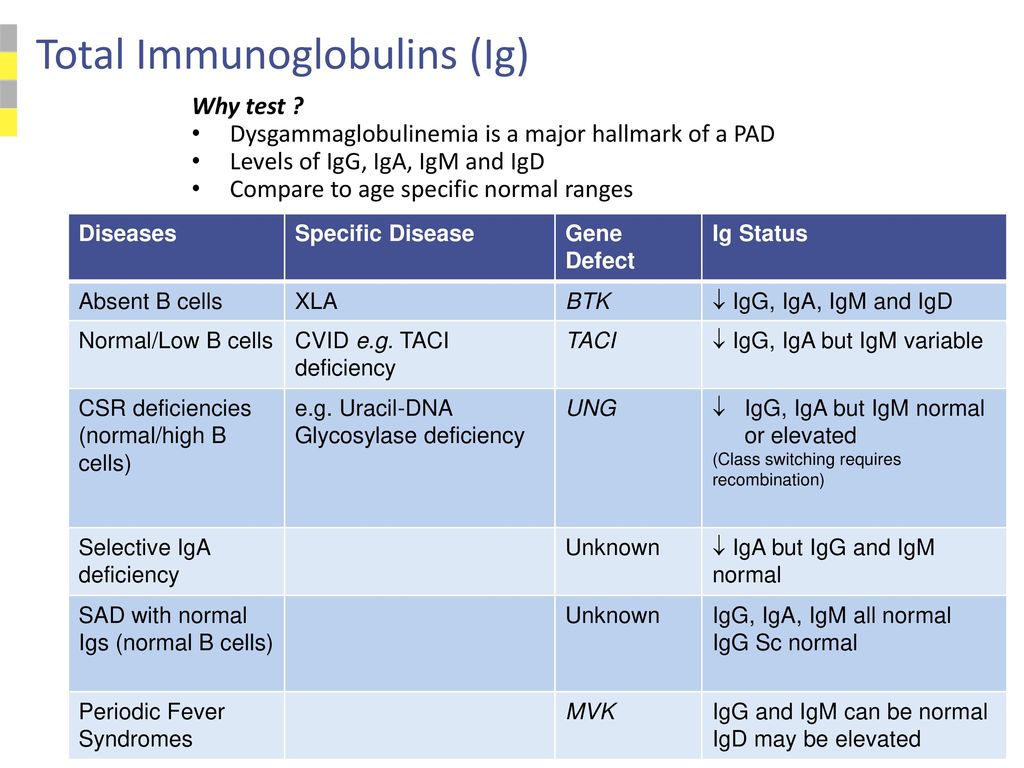

 7 Diseases that cause elevated levels of ALT and AST in women
7 Diseases that cause elevated levels of ALT and AST in women 16.3 What the test results mean
16.3 What the test results mean
 This is especially true of hepatotoxic drugs that have a negative effect on the liver.
This is especially true of hepatotoxic drugs that have a negative effect on the liver.